John Hurrell – 7 November, 2023
In terms of associations, these abstract works have an overt meteorological ambience, presenting a flickering glowing light in a restless sky that might also be reflected on turbulent water. There are many varied associations such as aurora borealis, sheet lightning, violent storms, volcanic eruptions, cascading ice-flows, tornados, or floods. The viewer is immersed in these ferocious (possibly catastrophic) weather conditions.
In this Sumer show, Georgie Hill‘s presentation straddles the slippery border between painting and drawing, especially when using acrylic on canvas that has collaged rectangular canvas components. Most have a dry brush technique, featuring feathery graphic linear marks and slivers of airy background white support space. The work, of course, has strong connections to the prints for which she is well known.
Besides nine atmospheric canvases there are also four watercolour on paper works, with paper collaged triangles. In her practice Hill likes to incorporate various unusual dyeing, incising, frottaging and washing techniques that result in richly layered textures. Shimmering agitated lines are dominant that seem from a distance to be made with pastel or crayon, and her use of collage features hovering rectangles surrounded by a gesturally activated field, with abruptly delineated edges. The colour combination choices tend towards harsh complementaries, although they usually include soft pastel hues—not saturated or harsh.
Often with the paper works she creates incised pale lines that look like tossed curling string. The gouged-out paper creates a low bank on the curved side of the wiggly trough and seems, on her part, to be a deliberate reference to drypoint intaglio printing where the penetrating angled needle forms a burr; except here with a paper base and not an incised printable sheet of zinc. Hill seems interested in the subtlety of raking light crossing the white furrow and highlighting the relief of the accompanying burr, with its tiny shadow.
This artist’s titles allude to various gods and goddesses in Greek mythology, the symbolic content of late Quattrocento painters such as Botticelli, and the Classicist studies of the Canadian poet Anne Carson. In terms of associations, these abstract works have an overt meteorological ambience, presenting a flickering glowing light in a restless sky that might also be reflected on turbulent water. There are many associations such as aurora borealis, sheet lightning, violent storms, eruptions, ice-flows, tornados, or floods. The viewer is optically immersed in these ferocious (possibly catastrophic) weather conditions.
One curious aspect of Hill’s evocative ‘meteorological’ paintings is the affinities with some of JMW Turner’s paintings from the mid-1840s, with the violently streaming wet air that twists and turns. Hill (like Turner) could be strapped down on the front desk of a lurching ship-plowing through the sea in the middle of a howling gale. They allude to life-threatening drama and possibly references climate change.
When pondering Hill‘s use of partially hidden collaged oblongs as seemingly ironic stabilising foils on agitated picture-planes, one is intrigued by the suspended rows of colliding vectorial tensions, tonal contrasts and clashing linear rhythms. In each rectangle, with its four vibrating borders, parallel horizontal lines are discreetly positioned, futilely balanced in the surrounding midst of swirling blue and orange, or purple and pink, chaos—a watery fieriness representing emotional and political intensity.
John Hurrell
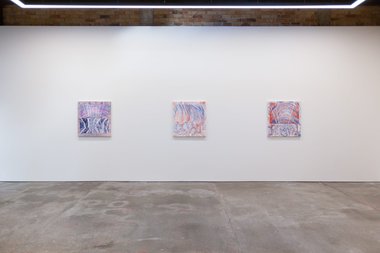
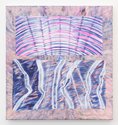
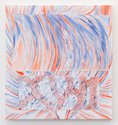
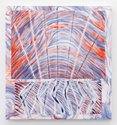
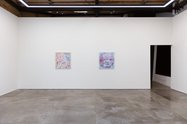
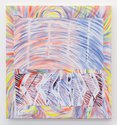
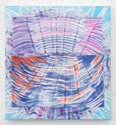
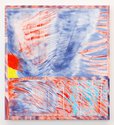
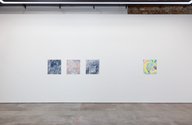
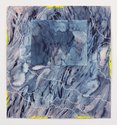

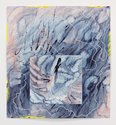
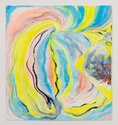
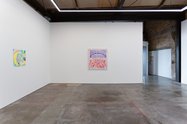
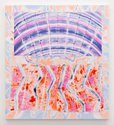

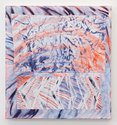
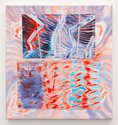
 Two Rooms presents a program of residencies and projects
Two Rooms presents a program of residencies and projects Advertising in this column
Advertising in this column



This Discussion has 0 comments.
Comment
Participate
Register to Participate.
Sign in
Sign in to an existing account.